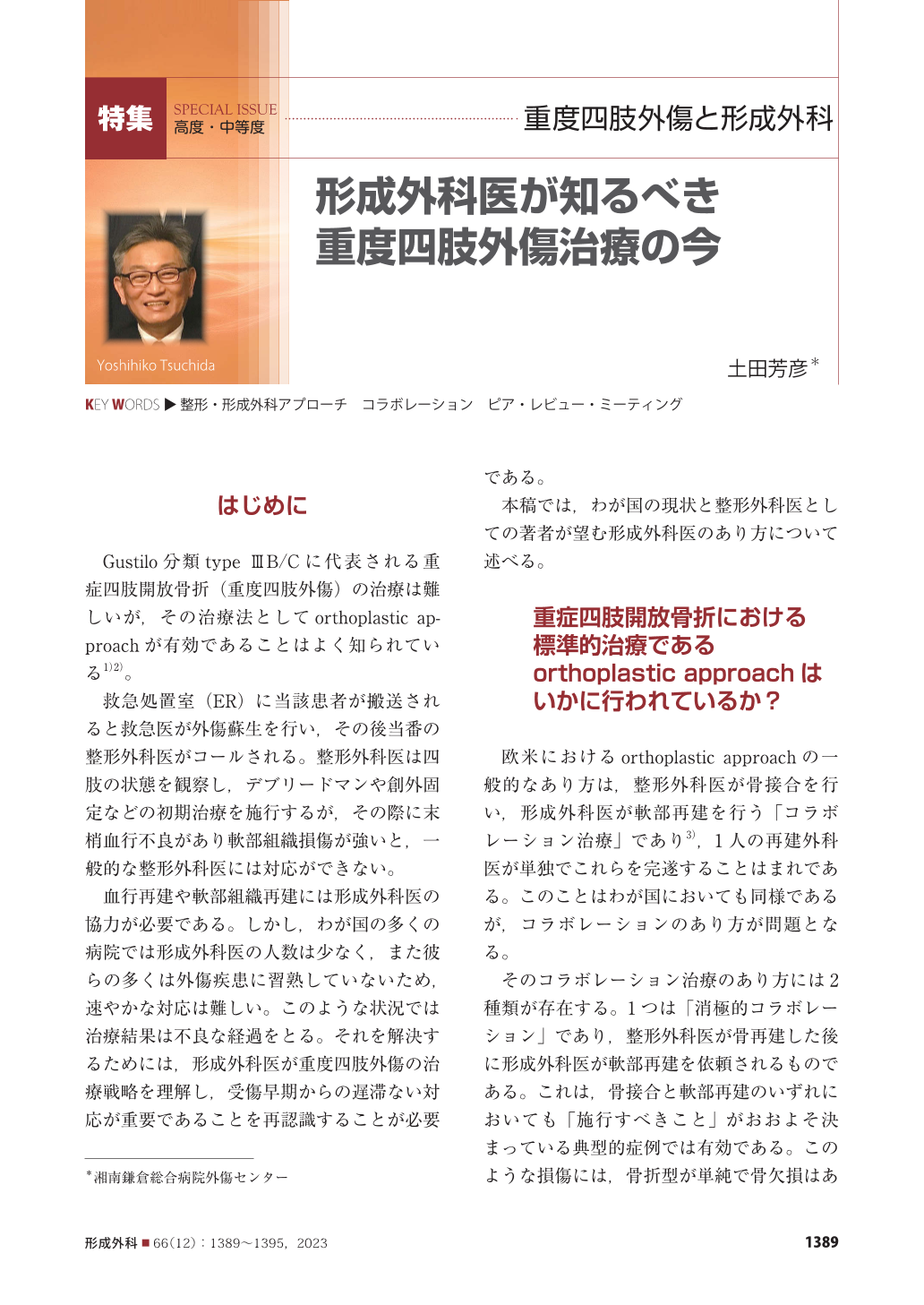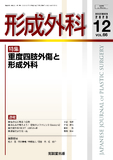Japanese
English
- 有料閲覧
- Abstract 文献概要
- 1ページ目 Look Inside
- 参考文献 Reference
はじめに
Gustilo分類type ⅢB/Cに代表される重症四肢開放骨折(重度四肢外傷)の治療は難しいが,その治療法としてorthoplastic approachが有効であることはよく知られている 1)2)。
救急処置室(ER)に当該患者が搬送されると救急医が外傷蘇生を行い,その後当番の整形外科医がコールされる。整形外科医は四肢の状態を観察し,デブリードマンや創外固定などの初期治療を施行するが,その際に末梢血行不良があり軟部組織損傷が強いと,一般的な整形外科医には対応ができない。
血行再建や軟部組織再建には形成外科医の協力が必要である。しかし,わが国の多くの病院では形成外科医の人数は少なく,また彼らの多くは外傷疾患に習熟していないため,速やかな対応は難しい。このような状況では治療結果は不良な経過をとる。それを解決するためには,形成外科医が重度四肢外傷の治療戦略を理解し,受傷早期からの遅滞ない対応が重要であることを再認識することが必要である。
本稿では,わが国の現状と整形外科医としての著者が望む形成外科医のあり方について述べる。
The treatment of severe open limb fractures is challenging, but good results have been achieved through the ʻorthoplasticʼ approach. In Japan, collaboration between orthopedic surgeons (who perform bone fixation) and plastic surgeons (who perform flap surgery) is common, but if these two specialists do not sufficiently understand the otherʼs treatment strategies and techniques, the outcomes can be poor. A solution to this is to have both orthopedic and plastic surgeons participate in the peer review meetings, where treatment outcomes for severe limb trauma cases are discussed.

Copyright© 2023 KOKUSEIDO CO., LTD. All Rights Reserved.


